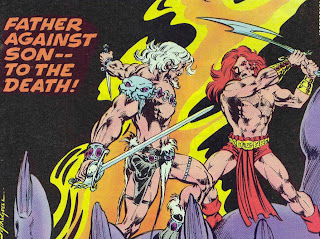Let’s again open the doors of Munsen’s “Life of Fantastic Danger” Museum, where many of the City’s adventurers--both world-renown and relatively obscure--are celebrated:
Blaise (“Blaze”) Dalton
Once just a cowpoke riding the range up through Freedonia and the West, Dalton’s life changed when following lost calf near one of the side channels of the Grand Chasm led him into a lost valley. Saving a princess condemned to death at the hands of a giant prehistoric tiger won him the princess’ adoration and--after he broke the beast like it was a bronc--the tiger as a mount. Dalton abandoned the princess in the night a few weeks later, but kept the cat. He once famously rode it through the streets of the City one Yule night chasing the Grumpf who had abducted a chorus girl. Dalton was brought up n charges for the stunt, but was ultimately pardoned. His lasso is a rope of entanglement that supposedly comes when he whistles.
Belle “Bang-Bang” Starr
A runaway from a small East Freedonia town, “Belle Starr” first took that name when working as the target girl for a sharpshooter in a carnival sideshow. Though she soon graduated to “cooch” dancing (which was more lucrative), she also picked up the sharpshooter's art. Her talents noticed by an agent, she moved to the City and worked as a burlesque and striptease dancer--while adventuring on the side. She took part in the raid on the Growing Tower, braved the obsessive, junk maze of the Brothers Coyle, and spent a perilous (and raucous) night in the Hotel Elephantine as a "guest" of the lich Hieronymus Gaunt. Starr is a proponent of “less is more” when it comes to adventuring attire, and where possible goes into battle in one of her stage costumes, swearing by the distraction it provides (at least when dealing with foes human and male). Of course, she isn’t above improving the odds with Pasties of Protection, either.
Mingus Rooke
Though only a country boy just arrived in New Ylourgne, Rooke nevertheless impressed jazz band leader and sorcerer Salomo King. Learning both the music business and thaumaturgical working through music from King, Rooke put his skills to use with various adventuring gangs once he struck out on his own. Arriving in the City, Rooke began making a name for himself in the jazz night-spots and earned the enmity of Mr. Scratch, after turning down an exclusive contract--an enmity that would plague his adventuring career. Rooke retired from “the adventuring life” relatively young, after suffering a minor stroke. This he suffered while blowing Gabriel’s trumpet to summon an angelic host to save Hardluck from processing by the alien Machineries of Night. Rooke still plays on occasion--if not quite as well as he used to--and operates a trendy Solace night-club, The Blue Hound.
1 hour ago

























































